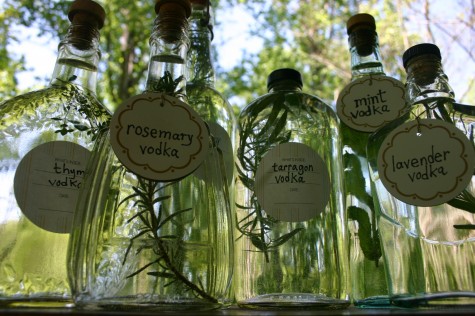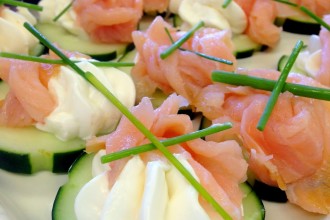Here’s 7 of the hottest food trends you’ll be seeing more of this Summer.
Super grains
Most of us have heard of Quinoa, Spelt and Millet, but the latest ‘super’ or ‘ancient’ grains on the block this summer are Freekah and Kaniwa. Both are high in fibre, protein, vitamins and minerals. Freekeh comes from unripe wheat. It has a smoky flavour and can be used in pilaf, stuffing, or salads. Cook it as you would rice, if you have the whole Freekeh it’ll take about 45 minutes to simmer, if you have cracked Freekeh it will take about 20 minutes. Try cooking it in vegetable stock, adding in some caramelized onions, peas, black pepper, fresh oregano and parsley and drizzle with a little non-fat Greek yogurt. Kaniwa, is a seed, and similar to Quinoa, it’s cooked the same way, the only difference is Kaniwa has a mild, nutty and slightly sweet taste. It’s high in protein fibre, iron, and calcium. Use it in the same way you’d use quinoa or in place of rice. Try serving it as porridge, a warm pilaf or salad or add it to stir-fries, soups and stews. It can also be ground into flour which can then be used to make earthy breads and sweet pastries.
Vegetable desserts
Getting our 5 A Day can sometimes be a challenge, but not when you realise vegetables don’t have to be confined to savoury dishes. Naturally sweet, carrots, beetroot, parsnips and courgettes add flavour and texture to cakes, and help keep them fresh and moist. Carrot is a classic addition to lightly spiced cakes, and parsnip is more unusual but works well with ginger and cinnamon. Courgette makes the best moist, light muffins, and beetroot and chocolate are great partners. The beetroot gives the cake a delicious fudgy texture. Also, try pumpkin or squash with mixed spice. As vegetables, contain a variety of key nutrients for very few calories, are anti-inflammatory and boost fibre intake which is associated with increased satiety and weight loss, it’s hard to see the downside.
Hybrid fruits and vegetables
Broccoflower, Broccolini, Kalettes and Pluots; all new hybrid vegetables we’re set to be seeing a lot more of in 2015. Broccoflower; broccoli crossed with cauliflower, has a flavour similar to a cauliflower but slightly sweeter. Broccolini; broccoli crossed with Chinese broccoli looks just like broccoli, but has longer stalks and smaller florets. It tastes sweet with a subtle hint of pepper. Because of its thinner stalk, it takes less time to cook than traditional broccoli so be careful not to overcook it. Kalettes; Brussels sprouts crossed with kale, have a more subtle flavour than Brussels sprouts and are tasty sautéed or blanched. Pluots, sometimes called dinosaur fruit, are a cross between a plum and apricot and are much sweeter than both. Critics of hybrids claim its genetic engineering and in the purest sense it is, because most of the hybrids on the market today came about because farmers intentionally cross bred them. However hybridization occurs naturally all the time. There’s also evidence that some hybrid foods contain reduced nutrient levels and higher levels of sugar and starch. I always recommend clients ‘eat a rainbow’; the more varied and deeper the colour of fruit and vegetables, the higher the phytonutrient content.
Botanical cocktails
Botanical Cocktails are one of this summer’s hottest trends, the Botanical Cocktail Lab, The Midnight Apothecary and Christabel’s are just a few bars specialising in seasonal cocktails infused with herbs, flowers, berries and fruits which are luxuriously indulgent and super healthy. Nearly all plants have some kind of health benefit, Passiflora, known also as passion flowers is said to be good for anxiety, while Elderflower is said to improve resistance to allergens. Angelica root, found in some gins has long been used in traditional medicine as a treatment for digestive issues. Experiment at home by making botanical ice cubes. To elevate a gin and tonic, simply chop two cucumbers, leaving seeds and peel intact. Combine with 1 oz. of coriander seeds and one cup of simple syrup (1/4 water 3/4 sugar) in a blender to puree. Strain the combination through a fine sieve and freeze in an ice cube tray.
Cutting meat consumption
Going meatless once a week has so many benefits it’s a no-brainer. Not only can it help reduce your risk of chronic, preventable conditions like cancer, cardiovascular disease, diabetes and obesity, it can help reduce your weekly shopping budget. Going meatless once a week can also help reduce your carbon footprint and save precious resources like fossil fuels and fresh water. With so many great vegetarian foods available from soups stews, casseroles, curries and veggie sausages, burgers and roasts, having at least one day a week without meat is an easy way to ‘do your bit’ for the planet. It may also help broaden your culinary horizons along the way.
DIY flavoured water
It only takes a second to turn a plain jug of water into something much more exciting. Start with citrus varieties; strawberry-lemon with basil or pineapple, orange and ginger or try experimenting with something a little different like raspberry, rose, and vanilla water, blueberry and lavender or melon, honey and mint. Simply place the fruit, herbs, and/or spices in a glass jug or jar and muddle with a wooden spoon to release the juices. Fill the jar with still or sparkling water, if you’d like something a bit sweeter, try adding agave or stevia. Refrigerate overnight for maximum flavour. Serve over ice.
Sprouting
Sprouting raw nuts, seeds, legumes and grains is one of the quickest, easiest ways to pack a group of nutrients into your body (dietary fibre, B complex C and E vitamins and protein). Rinsing and soaking seeds removes enzyme inhibitors allowing the seed to germinate. This process breaks down proteins to separate amino acids and complex starches and simpler carbohydrates, making them far easier to digest. A recent study[1] found that the antioxidants in broccoli sprouts may reduce insulin resistance and assist with blood-sugar control in people with type 2 diabetes. The method is the same for most, nuts, seeds, legumes and grains, it’s just the time that varies. Simply fill a jam jar one third full of what you want to sprout, then cover with water overnight. Drain and rinse the next day, repeat 2-3 times per day and your seeds will turn into sprouts. Add to salads or warm lentil dishes. A word of caution, bacterial contamination is a potential health hazard of sprouting. Preparing sprouts with known antimicrobial foods such as vinegar, garlic and onions can help kill any lurking pathogen. When growing sprouts at home, look for seeds that have been specially prepared for sprouting, (found in health food stores). They’ll be clearly labelled and cleaned so are less likely to contain pathogenic bacteria. For more details on the basics of sprouting see http://sproutpeople.org/growing-sprouts/sprouting-basics/

Disclaimer: The information provided is intended for your general knowledge only and is not a substitute for professional medical advice or treatment for specific medical conditions. Please consult your healthcare provider with any questions or concerns you may have regarding your condition. Supplementation should only be temporary. If you’re eating a nutrient-rich diet, extra supplementation should only last for a month or two, just long enough to resolve the deficiency.
Shani Shaker BA (hons), dipION, mBANT, CNHC, is a registered nutritional therapist with a focus on regenerative and functional nutrition. Contact her at [email protected] or via www.superradiance.co.uk
Ref:
[1] International Journal of Food Sciences and Nutrition, April 2012




